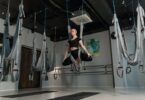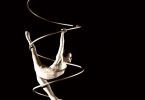In the demanding world of circus arts, every minute counts. To master your craft and maintain peak performance, it’s essential to maximize your practice time. However, busy schedules and competing priorities can make this challenging. In this article, we’ll explore productivity tips to help circus artists make the most of their practice sessions, ensuring that you achieve your goals efficiently and effectively.
1. Establish a Structured Practice Routine
1. Create a Detailed Practice Plan
A structured practice plan helps you stay focused and organized. Outline your practice goals, break them down into specific tasks, and allocate time for each. Whether you’re working on a new routine or perfecting existing skills, having a clear plan ensures that you use your practice time effectively and stay on track (American Council on Exercise).
2. Set SMART Goals
Setting SMART (Specific, Measurable, Achievable, Relevant, Time-bound) goals for each practice session can improve productivity. For example, instead of a vague goal like “practice aerial silks,” aim for “perfect the aerial inversion technique by the end of the session.” This approach provides direction and helps measure progress.
2. Prioritize Quality Over Quantity
1. Focus on Key Skills
Instead of spending long hours practicing without a clear focus, prioritize quality over quantity. Concentrate on key skills or areas that need improvement. You can achieve more significant progress in less time by dedicating time to mastering specific techniques or addressing weaknesses.
2. Implement Targeted Drills
Incorporate targeted drills into your practice routine to address specific challenges. For example, if you struggle with balance on a trapeze, spend extra time on balance drills. Targeted practice helps you build proficiency more efficiently and reinforces critical skills.
3. Use Time Management Techniques
1. Implement the Pomodoro Technique
The Pomodoro Technique is a time management method that involves working in focused intervals, typically 25 minutes, followed by a short break. This technique can help maintain concentration and prevent burnout during practice sessions. Use a timer to manage your intervals and take regular breaks to stay fresh and motivated (Pomodoro Technique).
2. Minimize Distractions
Create a distraction-free practice environment to maximize productivity. Turn off notifications, limit interruptions, and set boundaries with others during practice time. A focused environment allows you to fully concentrate on your practice and make the most of each session.
4. Optimize Your Practice Space
1. Design an Efficient Practice Area
Ensure that your practice space is organized and conducive to your performance. Arrange equipment and props in a way that allows for smooth transitions between exercises. A well-organized space minimizes time spent setting up and helps maintain focus during practice.
2. Invest in Quality Equipment
Investing in high-quality equipment is essential for maximizing practice efficiency and ensuring safety. Whether you’re practicing on aerial silks or trapeze, having reliable and durable gear allows you to focus on your technique without worrying about equipment malfunctions. At Vertical Wise Shop, we offer a range of professional aerial equipment designed to support your performance and enhance your practice experience.
5. Incorporate Cross-Training
1. Engage in Cross-Training Activities
Cross-training involves incorporating different exercises or activities into your routine to improve performance. For example, practicing yoga or strength training can enhance flexibility and strength, which are beneficial for circus skills. Cross-training helps balance your practice routine and reduce the risk of overuse injuries.
2. Enhance Overall Fitness
Maintaining overall fitness contributes to better performance in your primary circus skills. Regular cardiovascular exercise, strength training, and flexibility work can improve your stamina, strength, and range of motion. A well-rounded fitness routine supports your circus practice and enhances overall performance.
6. Track and Review Progress
1. Keep a Practice Journal
Maintaining a practice journal helps you track your progress and identify areas for improvement. Record details of each practice session, including what was accomplished, challenges faced, and adjustments needed. Reviewing your journal regularly provides valuable insights and helps you stay motivated (Journal of Applied Sport Psychology).
2. Reflect and Adjust
Regularly reflect on your practice routine and make adjustments as needed. If certain techniques or drills are not yielding the desired results, be open to changing your approach. Flexibility in your practice routine ensures that you continually progress and address any emerging challenges.
Conclusion: Making the Most of Your Practice Time
Maximizing your practice time requires a strategic approach to ensure that each session is productive and efficient. By establishing a structured practice routine, prioritizing quality, using effective time management techniques, optimizing your practice space, incorporating cross-training, and tracking your progress, you can make the most of your practice time and achieve your circus performance goals.
How do you manage your practice time effectively? Do you have any tips or strategies that have worked well for you? Share your insights and experiences in the comments below—your advice could help fellow circus artists make the most of their practice sessions!








